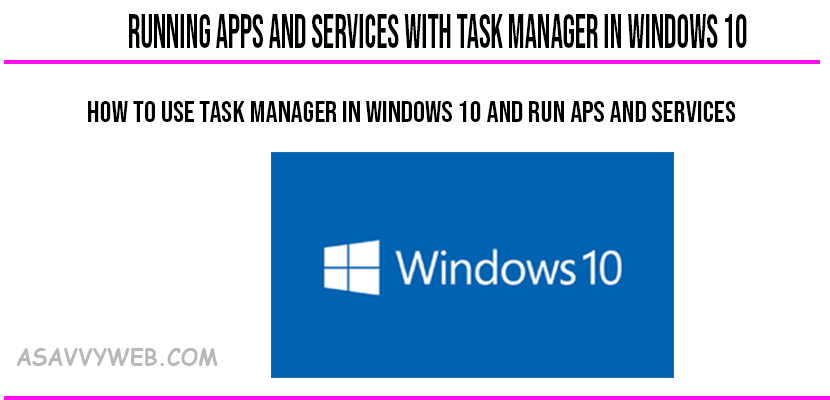Windows Task Manager is very useful little tool for managing and troubleshooting apps and services, with full potential. It is very similar to how to use it to manage your start-up apps, but what about apps and both Windows and third-party services that are already running? How can you troubleshoot and manage those will see in details here.
Use Task Manager
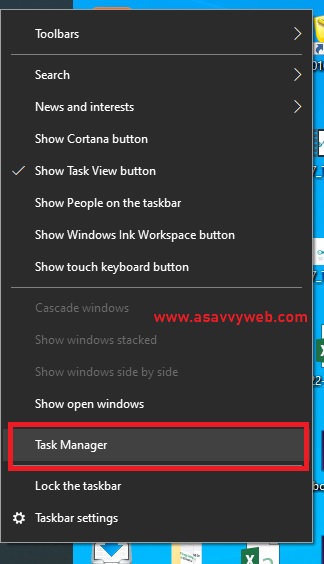
You can open Task Manager by right-clicking in a black space on the Taskbar and select task manager or Press Ctrl+Alt+Del menu or CTRL+TAB+ESC, or from the Win+X menu on windows keyboard and this will launch task manager.
If you have an app that is malfunctioning and won’t close, or has hung or crashed, you can manage it from the Processes tab in Task Manager.
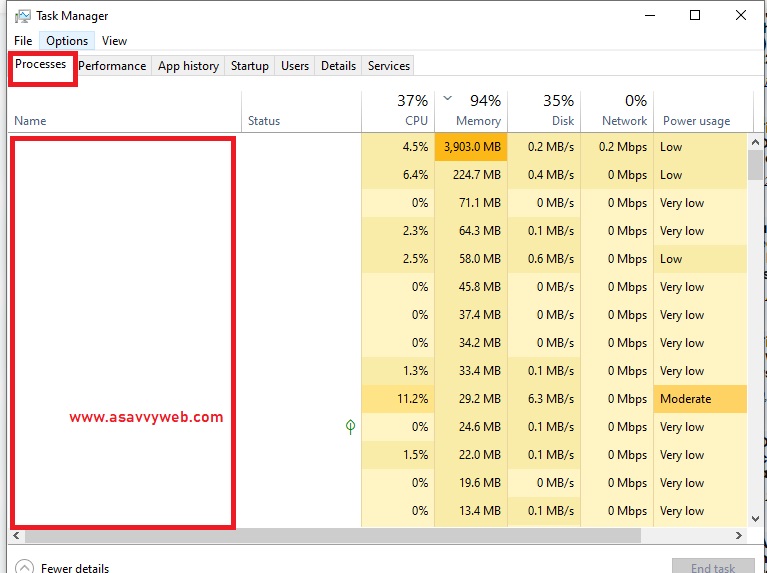
Click the name of the app you want to close and click the End task button in the bottom right corner of the Task Manager window.
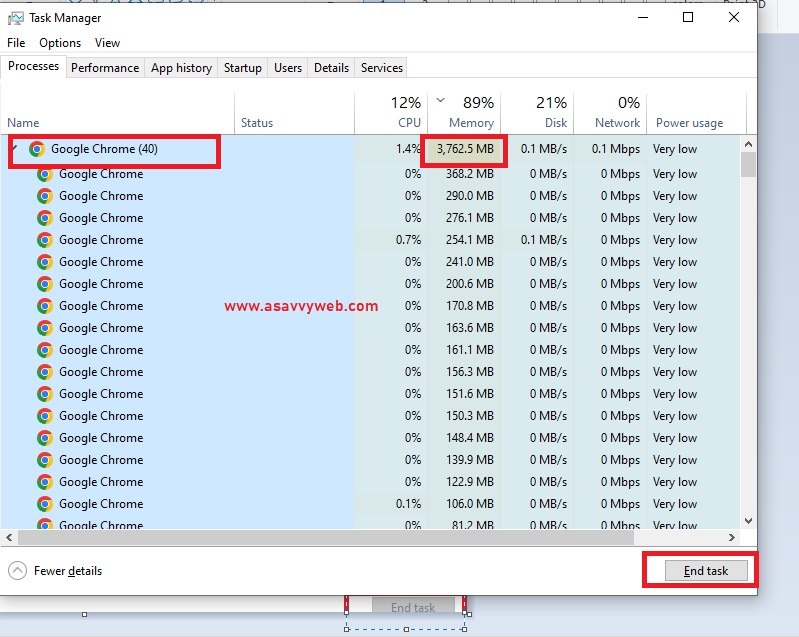
Should you have multiple instances of an app running on your computer and only one has crashed or needs to be forcibly closed then
click the arrow to the left of the app name to expend the list of all running instances of the app. You can then close just the faulty instance.
Sometimes you will have an app that also has dependent apps or services. Think of this as an app consisting of a main app with several sub-apps running at the same time, all for different purposes but all required for the main app to work.
If a sub-app crashes, or if you need to close an app and all of its dependencies for it to work, you can do this from the Details tab . Right-click the app, and from the context menu that appears, click End process tree.
Details Tab in Windows Task Manager App
Other app management operations that can be performed by right-clicking an app, service, or process in the Details tab include.
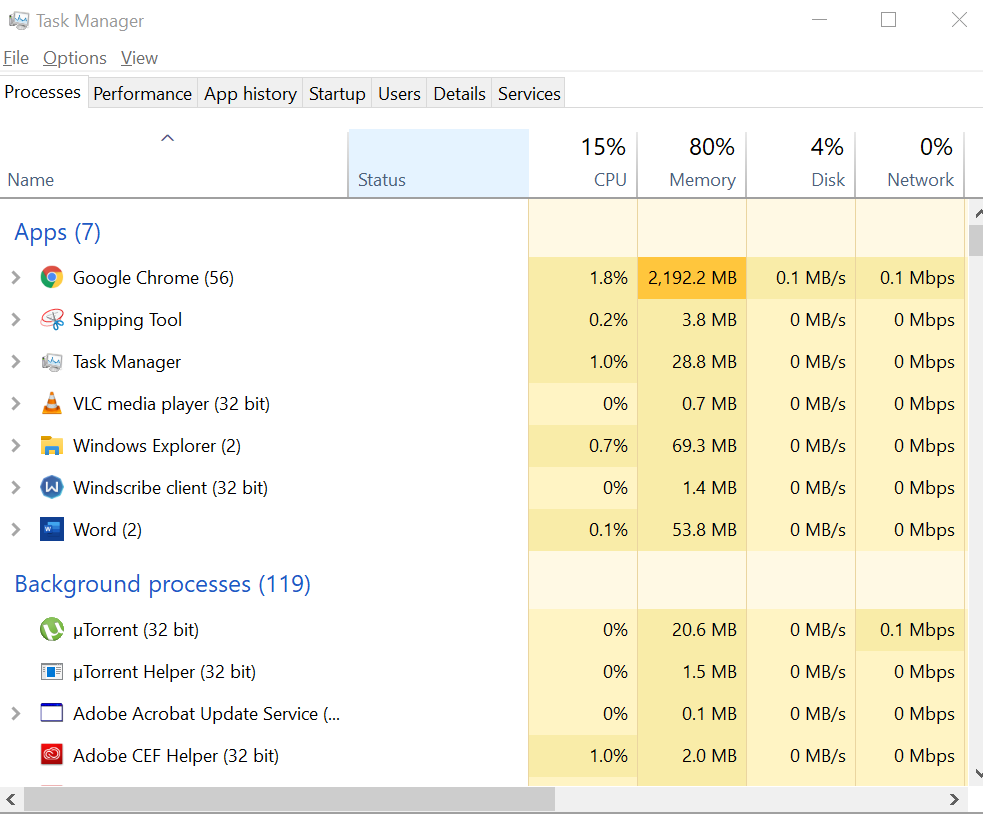
Set priority: To change the amount of processor time allocated to the apps from Normal, to Below Normal, Low, Above Normal, High, or Real time.
Set affinity : To change which processors or processor cores on your PC are assigned to the app (most useful when assigning individual processors to Virtual Machines).
Analyze Wait Chain : This can be used if an app has hung, to identify which resources the app is waiting to use, and is required for the process to continue.
Debug: Debug can be used if you have development software installed on your PC, such as Microsoft Visual Studio, to analyze bugs and crashes in compatible apps and services.
User Account Control (UAC) Virtualization: used when some apps require the user to have full administrative rights, but the user is signed into the PC as a “Standard user” instead. This can be common with poorly written legacy apps. Activating UAC Virtualization enables Windows 10 to virtualize protected areas of the OS, such as the file system and Registry, so that the app can operate normally without hanging or reporting errors .
Create dump file: will create a report on a crashed or hung app and report the location of the file so you may read or copy it, or send it to a support technician.
Open file location: for win32 apps, will open a File Explorer window at the location where the app is installed. For Store apps, it will open the temporary app management folder located in the Windows/SystemApps folder and not the protected app store location.
Search online: will open a browser search for the name of the current process, so that you may research it and discover what it is.
Properties: It will opens the properties inspector for the app, which includes compatibility settings. Note any compatibility setting changes will only work once the app is restarted.
Go to Service(s): opens the Services tab in the Task Manager, and highlights any service(s) used by the process.
Running Services with Windows Task Manager
Services are best described as little applets that are designed to perform a specific task, and that are invoked automatically by Windows 10 or your apps as needed. They can manage your printer queue, security features, cloud syncing, and many more aspects of the OS and apps and are provided by both Microsoft and third-party app developers.
These services aren’t built directly into apps because they’re most commonly shared between multiple apps. For example, Microsoft provides services for font management, network access and discovery, and Bluetooth connections, which many other apps will want to use. Similarly, some apps systems (Adobe Creative Cloud as an example) will have their own data sharing services.
You manage Services primarily in the Services Administrative Panel and also You can stop a hung or crashed service in the Task Manager, however, by right-clicking it and selecting either Stop or Restart from the context menu that appears.
Services can also be started from the Task Manager if an app or process is reporting that a service it requires isn’t running. If you are unsure what a service is, or what it does, you can also search for the service online from this context menu, so as to find out more information about it.

